What can smart technology can do to make cities more sustainable? Kim Tremblay reports from Schneider Electric on why we must change the way we manage energy in cities.

December 11th, 2017
A lot has been written about the benefits of a smart city to its citizens. Things like better organised activities through city apps, smoother traffic flow, easier parking, and better communication with citizens are often cited. I certainly enjoy the smart parking garage that tells me where the next available space can be found and the smart signage that tells me the best route to avoid traffic after a concert. These benefits make life more convenient for sure, but we also need to think about the lasting benefits of reducing a city’s carbon footprint, using less energy and leaving the world a better place for our children. Now THAT’s ‘smart’.
We are facing exploding population growth. According to the www.worldometers.info/world-population/, the world’s population is growing at 1.2 per cent per year and much of that is concentrated in cities. This population growth is straining our electric grids and water supply, and city budgets just can’t keep up.
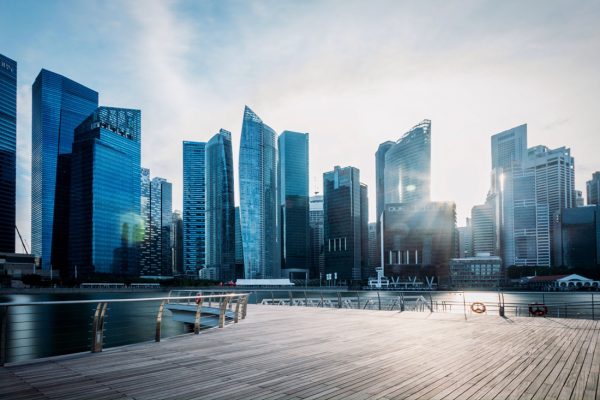
Image: Getty Images
Have you ever realised how much warmer it is when traveling into a city from a rural area? According to the US Environmental Protection Agency, the annual mean air temperature of a city with one million people can be more than 1.8 to 5.4 degrees Fahrenheit warmer than surrounding areas, and the evenings can be even warmer, meaning more fans and air conditioners. And, with more connectivity than ever via the internet of things (IoT), we are using more energy through our connected devices – generating more and more heat. (Most people don’t realise that their smart phone can actually use more electricity than a typical modern refrigerator due to the supporting infrastructure of servers and data centers used to access information.)
For issues like energy efficiency and sustainability, smart cities need partners with a proven track record. That’s where companies like Schneider Electric can come in.
To address a smart city with rapid population growth and its resulting challenges, Schneider Electric operating technologies provide solutions from smart energy to smart water to the smart built environment.
One example is the smart built environment, where Schneider Electric’s EcoStruxure architecture enables city buildings such as schools, hospitals, shopping malls and railway stations with the technology and tools to reduce energy consumption by up to 30 per cent.
Our reliance on electricity may never change, but we can find ways to make our cities smarter by measuring and monitoring energy consumption, finding new types of generation like microgrids and solar, and improving the energy efficiency of existing and new city systems. That’s what ‘smart’ is all about.
INDESIGN is on instagram
Follow @indesignlive
A searchable and comprehensive guide for specifying leading products and their suppliers
Keep up to date with the latest and greatest from our industry BFF's!
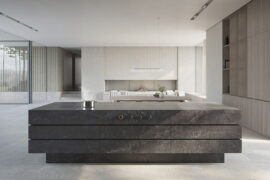
For those who appreciate form as much as function, Gaggenau’s latest induction innovation delivers sculpted precision and effortless flexibility, disappearing seamlessly into the surface when not in use.
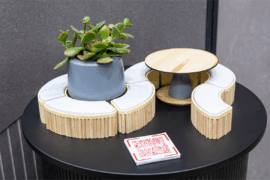
From the spark of an idea on the page to the launch of new pieces in a showroom is a journey every aspiring industrial and furnishing designer imagines making.

London-based design duo Raw Edges have joined forces with Established & Sons and Tongue & Groove to introduce Wall to Wall – a hand-stained, “living collection” that transforms parquet flooring into a canvas of colour, pattern, and possibility.
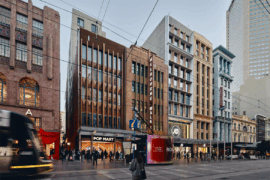
Merging two hotel identities in one landmark development, Hotel Indigo and Holiday Inn Little Collins capture the spirit of Melbourne through Buchan’s narrative-driven design – elevated by GROHE’s signature craftsmanship.
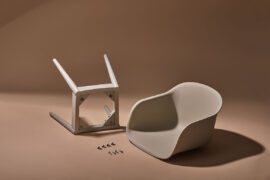
MillerKnoll releases the 2025 Better World Report showcasing how design can drive meaningful change through measurable progress across social, environmental and governance initiatives
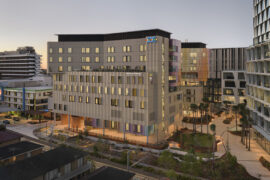
BLP’s new Sydney Children’s Hospital, Randwick building brings together paediatric care, family-centred design and Australia’s first Children’s Comprehensive Cancer Centre in a major addition to the Randwick Health & Innovation Precinct.
The internet never sleeps! Here's the stuff you might have missed
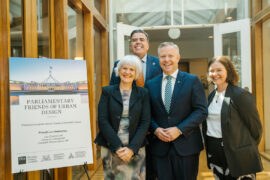
The Parliamentary Friends reconvened at Parliament House, uniting political and professional leaders to champion architecture and design.

For those who appreciate form as much as function, Gaggenau’s latest induction innovation delivers sculpted precision and effortless flexibility, disappearing seamlessly into the surface when not in use.